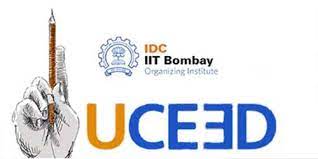UCEED 2022 will be conducted by Indian Institute of Technology Bombay, under the guidance of the UCEED-CEED Implementation Committee 2022 (henceforth referred as the UCI Committee).
Admissions to the Bachelor of Design (BDes) programmes at IIT Bombay, IIT Delhi, IIT Guwahati, IIT Hyderabad, and IIITDM Jabalpur are done through the Undergraduate Common Entrance Exam for Design (UCEED). UCEED Score Card is recognized by many institutes for admission to BDes programs. The list of result sharing institutes using UCEED score for admissions to BDes program is available on the official UCEED website.
Only those students who have passed Class XII (or equivalent) in 2021 in all subjects, or are appearing in 2022, in ANY STREAM (Science, Commerce, or Arts & Humanities) for the first time, are eligible to appear for UCEED 2022.
UCEED 2022 is open to all nationals (Indian/Foreign). Candidates seeking admission to the Bachelor Degree programme in Design (BDes)
UCEED 2022 score is valid only for admission to the programmes in the academic year 2022-2023.
SCHEDULE OF UCEED 2022
UCEED is a test centre-based examination and has two parts: Part-A is computer-based and Part-B contains question related to sketching that needs to be attempted on the provided sheet. It is compulsory for the candidates to attempt both the parts in the given time.
The total time for the examination (that includes both Part-A and Part-B) is THREE hours and it will be held as per the following schedule:
Date
January 23, 2022 (Sunday) Time 09:00 am to 12:00 noon
| Last date for Online Registration with regular fee | Oct 10, 2021 |
The BDes admission application counselling processing fee for applicants of all categories and genders is ₹ 2000 (Rupees Two Thousand only). This fee is non-refundable and non-transferable.
Syllabus
UCEED 2022 will have two parts.
Part-A will have questions from the following topics:
- Visualization and spatial ability: Pictorial and diagrammatic questions to test understanding of transformation and/or manipulation of 2D shapes and 3D objects and their spatial relationships, knowledge of practical and everyday mechanical and scientific concepts.
- Observation and design sensitivity: Ability to detect concealed properties in ordinary things, people, situations, and events, and thinking critically about them. Applying attention to certain details, analysing, reasoning, classifying, inferring and predicting. Ability to discern subtle differences in visual properties and aesthetic outcomes.
- Environmental and social awareness: General awareness of environmental factors such as climate, population, water, vegetation, pollution, weather, natural resources etc., and their implications on the design of products, images, infrastructure and environment. Awareness of social and cultural connection with design, history of the designed artefact, and socially responsible and environmentally sustainable design responses. History of art, sculpture and literature.
- Analytical and logical reasoning: Ability to look at information, be it qualitative or quantitative in nature, and discern patterns within the information. Ability to weigh opinions, arguments or solutions against appropriate criteria. Ability to check for hidden bias or hidden assumptions and whether evidence and argument support conclusions. Ability to use logic and structured thinking to deduce from a short passage, which of a number of statements is the most accurate response to a posed question. Data interpretation, brainteasers, and patterns.
- Language and creativity: Ability to understand and use Standard English. Reading comprehension, knowledge of English grammar. Ability to think creatively in terms of alternatives, ability to distinguish innovative options and to think out- of-the-box.
- Design thinking and problem solving: Ability to use visual analogies, metaphors, signs and symbols. Ability to understand complexity, identify problems, generate alternatives, evaluate options and select solutions.
Part-B will have ONE question from the following topic:
- Drawing: Ability to draw products, people or scenes in proportion with good line quality, composition, proportion, perspective and shading.
For Details-- CLICK HERE



